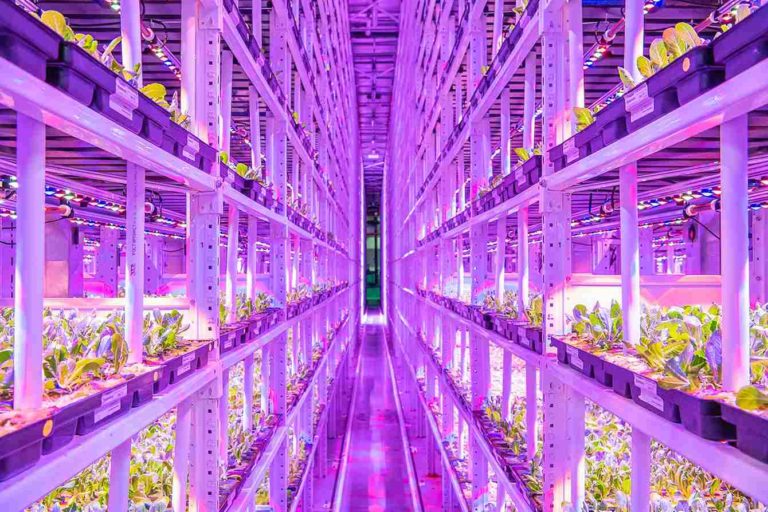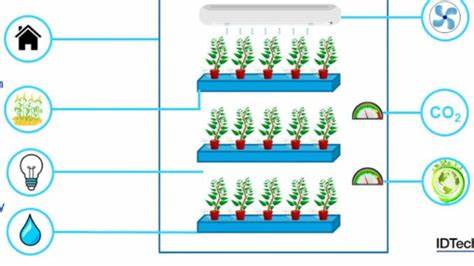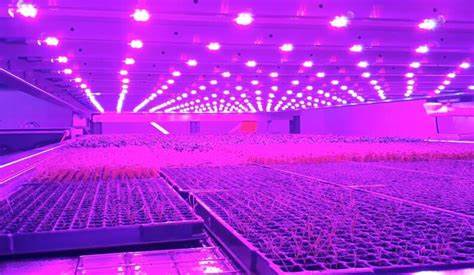
Vertical Farming: Revolutionizing Agriculture through Energy Efficiency
Introduction
In recent years, vertical farming has emerged as a groundbreaking solution to the challenges faced by traditional agriculture. This innovative method involves growing crops in vertically stacked layers, utilizing advanced technologies to create controlled environments. As the global population continues to grow, the need for sustainable and efficient farming practices becomes increasingly crucial. In this article, we will delve into the importance of addressing energy consumption in vertical farming and explore the role of energy efficiency in achieving sustainable agriculture.
Historical Background
Vertical farming has a rich history that dates back decades. Its origins can be traced to the work of American geologist Gilbert Ellis Bailey in the early 20th century. Bailey envisioned growing crops in multi-storey buildings, pioneering the concept that would later become known as vertical farming. However, significant advancements in this field were not made until the late 20th century.
Traditional agriculture heavily relies on fossil fuels and consumes substantial amounts of energy. The evolution of energy consumption in traditional agriculture has had detrimental effects on the environment, including deforestation and greenhouse gas emissions. These impacts have spurred the search for energy-efficient alternatives, leading to the rise in popularity of vertical farming as a sustainable solution.
Key Concepts and Definitions
To understand the significance of energy consumption in vertical farming, it is important to define the key components and concepts associated with this practice. Vertical farming involves the cultivation of crops in vertically-stacked layers using hydroponics, aeroponics, or aquaponics systems. These systems provide optimal conditions for plant growth, including the controlled use of water, nutrients, and light.
Energy consumption plays a vital role in vertical farming, as it powers the various systems and technologies utilized. Metrics and terminology relevant to measuring energy efficiency in vertical farms include kilowatt-hours per square foot, lighting efficacy, and HVAC (Heating, Ventilation, and Air Conditioning) efficiency. Understanding these metrics is crucial for optimizing energy consumption and achieving sustainable vertical farming practices.

Main Discussion Points
Point: Energy-efficient Lighting Systems
Lighting systems are a critical component of vertical farms, providing the necessary light spectrum for plant growth. Different types of lighting systems are used, including fluorescent, high-pressure sodium (HPS), and light-emitting diode (LED) lights. Each system has varying energy consumption and efficiency levels.
LED technology has revolutionized energy-efficient lighting in vertical farming. LEDs have a higher light output per watt compared to traditional lighting systems. They also have a longer lifespan, reducing the need for frequent replacements. Advancements in LED technology have significantly improved energy efficiency in vertical farms, leading to reduced energy costs and environmental impact.
Point: Climate Control and HVAC Systems
Climate control is crucial in vertical farming to maintain optimal growing conditions. HVAC systems play a vital role in regulating temperature, humidity, and air quality within the vertical farm environment. However, these systems can consume significant amounts of energy if not optimized.
Energy consumption in HVAC systems can be reduced through innovative approaches such as utilizing natural ventilation, heat recovery systems, and advanced control algorithms. Integrating energy-efficient climate control technologies in vertical farms can lead to substantial energy savings while maintaining optimal growing conditions.
Point: Renewable Energy Integration
Renewable energy sources offer immense potential in powering vertical farms sustainably. Solar, wind, and geothermal energy can be harnessed to generate electricity, reducing greenhouse gas emissions and reliance on fossil fuels.

Numerous case studies highlight successful integration of renewable energy sources in vertical farms. These examples demonstrate the benefits of renewable energy, including reduced energy costs, increased energy independence, and enhanced sustainability. However, challenges such as initial investment costs and intermittency of renewable energy sources need to be addressed for wider adoption.
Point: Energy Management and Monitoring Systems
Efficient energy management is crucial for optimizing energy consumption in vertical farming. Energy management systems (EMS) enable real-time monitoring and control of energy usage, allowing for data-driven decision-making. Energy monitoring and data analysis techniques help identify areas for improvement and optimize resource allocation.
Successful examples of energy management systems implemented in vertical farms showcase the potential for significant energy savings. These systems enable precise control of lighting, climate, and irrigation, minimizing wastage and maximizing energy efficiency.
Case Studies or Examples
Real-world examples offer valuable insights into how vertical farms are addressing energy consumption. These case studies highlight energy-saving strategies implemented in various vertical farms. From utilizing LED lighting systems and integrating renewable energy sources to implementing advanced energy management systems, these initiatives have resulted in notable reductions in energy consumption and increased sustainability.
Analyzing the results and impact of these initiatives provides valuable data for future vertical farming projects. By sharing these success stories, we can inspire and educate others within the industry on the importance of energy efficiency in vertical farming.
Current Trends or Developments
Ongoing research in the field of energy consumption in vertical farming continues to yield significant findings. Recent studies highlight the importance of optimizing energy usage to achieve sustainable agriculture. Emerging technologies and practices, such as advanced control algorithms and machine learning, offer promising avenues for reducing energy consumption in vertical farms.
Industry trends and collaborations focused on sustainable energy solutions for vertical farms are gaining momentum. The integration of energy-efficient practices and technologies in vertical farming is essential for achieving a greener future.

Challenges or Controversies
As with any emerging technology, vertical farming faces criticisms and concerns regarding its energy consumption. Critics argue that the energy-intensive nature of vertical farming may outweigh its potential benefits. Additionally, some question the trade-offs between energy efficiency and crop yield or quality, suggesting that energy-saving measures could compromise productivity.
The environmental impact of vertical farming compared to traditional agriculture is another point of debate. While vertical farming avoids some of the negative environmental impacts associated with traditional farming, the energy consumption required raises questions about its overall sustainability.
Future Outlook
The future of energy consumption in vertical farming holds immense potential for advancement. As technology continues to evolve, we can expect significant improvements in energy efficiency across all aspects of vertical farming. From more energy-efficient lighting systems and HVAC technologies to advanced energy management and monitoring systems, the future of vertical farming looks promising.
The scalability and widespread adoption of energy-efficient vertical farming methods are key to achieving sustainable agriculture on a global scale. By investing in research, development, and collaboration, we can overcome challenges and pave the way for a greener future.
Conclusion
Addressing energy consumption in vertical farming is integral to achieving sustainable and efficient agricultural practices. Through advancements in lighting systems, climate control technologies, renewable energy integration, and energy management systems, vertical farms can significantly reduce their environmental impact while increasing productivity.
By sharing knowledge, implementing best practices, and embracing emerging technologies, the industry as a whole can drive positive change and contribute to the development of a more sustainable future. Vertical farming has the potential to revolutionize agriculture and play a vital role in ensuring food security while mitigating the environmental challenges we face. It is imperative that we continue to prioritize energy efficiency in vertical farming to build a more sustainable and resilient future.




